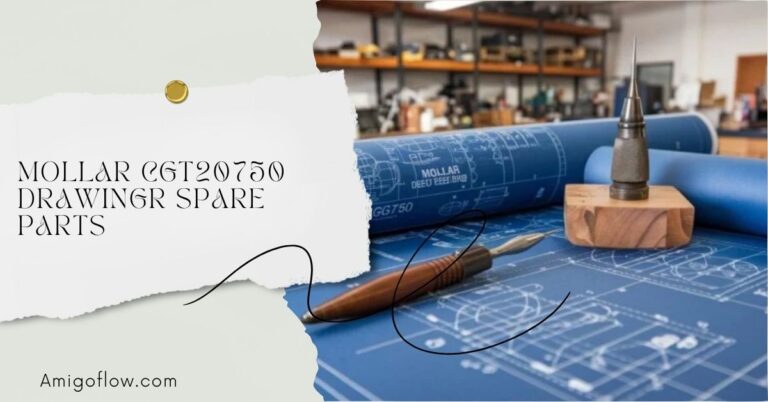In the rapidly evolving world of robotics and programming, understanding key tools and technologies is essential to building sophisticated and effective systems.
One such technology is the DeviceURL for VEX Brain in Node.js, a vital component for anyone looking to integrate the VEX Brain into their robotics projects using Node.js.
This article provides a comprehensive guide to what DeviceURL for VEX Brain Nodejs is, how it works, and why it matters, along with some tips, insights, and frequently asked questions (FAQs).
Introduction to VEX Brain and Node.js
Before diving into what DeviceURL for VEX Brain Nodejs is, it’s important to grasp the basics of the VEX Brain and Node.js. These two components form the backbone of many educational and competitive robotics systems.
What Is VEX Brain?
The VEX Brain is the central control unit used in VEX Robotics kits. It acts as the “brain” of the robot, controlling motors, sensors, and various hardware components.
The VEX Brain allows users to build complex robots for educational purposes, competitions, and research. Its intuitive interface and ability to be programmed make it ideal for all levels of users, from beginners to advanced roboticists.
What Is Node.js?
Node.js is a runtime environment that allows developers to execute JavaScript code outside of a browser. It’s widely used for building scalable, real-time applications due to its event-driven, non-blocking architecture. In the world of robotics, Node.js has become a popular choice for developers looking to create responsive, dynamic systems.
What Is DeviceURL?
DeviceURL is a specific Uniform Resource Locator (URL) that is used to address and identify a particular device—in this case, the VEX Brain—on a network. In the context of VEX Brain Node.js, the DeviceURL serves as the critical link that allows your Node.js application to communicate with the VEX Brain.
In simple terms, it’s the “address” of your VEX Brain, much like a website URL is the address of a website. By using DeviceURL, your Node.js application can send commands and receive data from the VEX Brain, creating a seamless interaction between your program and the physical robot.
Breaking Down DeviceURL:
- Device: Refers to the VEX Brain, the robot’s central control unit.
- URL: Uniform Resource Locator, which defines where the VEX Brain can be found on a network.
Understanding what is DeviceURL for VEX Brain Node.js is essential for connecting your robot to the network and enabling real-time control and communication.
The Importance of DeviceURL for VEX Brain Nodejs Integration
The DeviceURL acts as a bridge between the virtual environment (Node.js) and the physical world (VEX Brain). It is fundamental to making your robot “come alive” by linking it with your software. By connecting VEX Brain to a Node.js app, you gain several key advantages:
Seamless Network Integration
DeviceURL makes it easier to connect your robot to the network, allowing it to be controlled remotely or in real-time via your Node.js application. This is especially useful in large robotics projects where multiple components need to communicate efficiently.
Real-Time Data and Control
With the DeviceURL for VEX Brain Nodejs, developers can send commands instantly to the VEX Brain, retrieving data from sensors and updating the robot’s behavior in real-time. This real-time interaction is key for robotics competitions, research, and education.
Scalability
By using Node.js with the DeviceURL, developers can create scalable applications that handle multiple VEX Brains, enabling complex systems to be built with minimal performance degradation.
Flexibility and Customization
Node.js is known for its flexibility, and when combined with DeviceURL, developers can fully customize how their VEX Brain interacts with the rest of the application, opening up a world of possibilities for advanced robotics projects.
How DeviceURL Works for VEX Brain in Node.js
Understanding what is DeviceURL for VEX Brain Nodejs goes hand in hand with knowing how it works. The DeviceURL provides an addressable endpoint for the VEX Brain, enabling the Node.js application to interact with it.
Step-by-Step Process:
- Connect VEX Brain to Network: First, the VEX Brain needs to be connected to a local or remote network. This can be done using an Ethernet connection or a Wi-Fi adapter, depending on your setup.
- Assigning a DeviceURL: Once the VEX Brain is connected to the network, it will be assigned a unique DeviceURL, which acts as its address. This URL will be used by the Node.js application to send commands or retrieve data.
- Node.js Application Requests: The Node.js app sends HTTP requests to the DeviceURL, specifying the actions the VEX Brain needs to perform. For example, turning a motor on, receiving sensor data, or adjusting the robot’s movements.
- Real-Time Response: The VEX Brain processes the commands and returns data or status updates to the Node.js application, allowing for real-time interaction and feedback.
Setting Up VEX Brain with Node.js Using DeviceURL
To get started using DeviceURL for VEX Brain Nodejs, follow these steps:
Step 1: Install Node.js
If you don’t already have Node.js installed, download and install it from nodejs.org. Node.js is compatible with most operating systems, including Windows, macOS, and Linux.
Step 2: Connect VEX Brain to a Network
Ensure your VEX Brain is connected to a local network. This can be done using an Ethernet cable or a Wi-Fi connection, depending on your setup.
Step 3: Retrieve the DeviceURL
Once your VEX Brain is connected to the network, you can find its DeviceURL in the system settings or via the VEX Robotics interface.
Step 4: Set Up a Node.js Application
Create a new Node.js project by running the following command in your terminal:
mkdir vex-brain-nodejs
cd vex-brain-nodejs
npm init -y
This will create a basic Node.js project. Next, install any necessary libraries or packages to facilitate communication with the VEX Brain.
Step 5: Interact with the VEX Brain Using the DeviceURL
In your Node.js application, you can use the HTTP or WebSocket protocol to send requests to the VEX Brain via its DeviceURL. Here’s a basic example using the axios library to send a request to the DeviceURL:
const axios = require(‘axios’);
const deviceUrl = ‘http://your-vex-brain-url’; // Replace with your VEX Brain’s DeviceURL
axios.get(`${deviceUrl}/status`)
.then(response => {
console.log(‘VEX Brain Status:’, response.data);
})
.catch(error => {
console.error(‘Error fetching status:’, error);
});
This code sends a request to the VEX Brain and retrieves its status, allowing you to monitor and control the robot in real-time.
Key Benefits of Using DeviceURL for VEX Brain Nodejs
1. Simplified Communication:
Using a DeviceURL simplifies the process of communicating between Node.js and the VEX Brain, allowing for more intuitive and straightforward command execution.
2. Real-Time Interaction:
The ability to send commands and receive feedback instantly via DeviceURL opens up possibilities for highly responsive robotic systems. Whether it’s controlling motors or reading sensors, DeviceURL enables real-time interaction.
3. Cross-Platform Flexibility:
Since Node.js is cross-platform, the same application can work across different operating systems, making it easier to develop and deploy applications for VEX Brain robots in various environments.
4. Scalability:
As your robotics projects grow, you can easily scale them by integrating multiple VEX Brains and using their DeviceURLs to communicate with them simultaneously from a single Node.js application.
5. Customization:
DeviceURL gives developers the flexibility to customize their robotic systems to suit specific needs. Whether it’s for educational purposes, research, or competition, the combination of Node.js and VEX Brain offers endless possibilities.
Practical Use Cases of DeviceURL in VEX Robotics
1. Robotics Competitions:
In competitive environments, such as VEX Robotics competitions, real-time control and rapid data retrieval are crucial. Using DeviceURL, developers can enhance the responsiveness of their robots, ensuring they perform efficiently during competitions.
2. Educational Projects:
For students and educators, DeviceURL simplifies the process of programming robots. With Node.js, students can easily write code to control VEX robots in real-time, helping them better understand programming concepts.
3. Research and Development:
In research, where precision and customization are critical, using DeviceURL for VEX Brain Nodejs allows scientists and engineers to tailor robotic systems for specific experiments or prototypes.
4. Prototyping and Innovation:
For innovators and hobbyists, integrating VEX Brain with Node.js via DeviceURL can be a powerful tool for prototyping new robotic designs and concepts.
Challenges and Solutions in Using DeviceURL with Node.js
Challenge 1: Network Connectivity Issues
Since DeviceURL relies on network connectivity, issues with your Wi-Fi or Ethernet connection can disrupt communication between the VEX Brain and Node.js.
Solution: Ensure that your VEX Brain is properly connected to a stable network, and consider using a wired connection for more reliability during critical operations.
Challenge 2: Complexity in Multi-Device Systems
In large-scale projects with multiple VEX Brains, managing multiple DeviceURLs can become complex and cumbersome.
Solution: Implement a systematic approach to managing DeviceURLs, possibly using a central server to coordinate communication between multiple devices.
Challenge 3: Security Concerns
Exposing the VEX Brain to a network via its DeviceURL can introduce security risks, especially in environments where the robot might be controlled remotely.
Solution: Use secure protocols, such as HTTPS, and ensure that proper authentication mechanisms are in place to prevent unauthorized access.
Best Practices for Optimizing DeviceURL for VEX Brain Nodejs
- Use WebSockets for Faster Communication: While HTTP requests work well for simple commands, using WebSockets allows for faster, bi-directional communication between the Node.js app and the VEX Brain, making it ideal for real-time applications.
- Implement Error Handling: Ensure your Node.js application has proper error handling to deal with potential network issues or failed requests to the VEX Brain.
- Test in a Controlled Environment: Before deploying your application in a live environment, test it in a controlled setting to ensure smooth communication between the Node.js app and the VEX Brain via the DeviceURL.
- Document DeviceURLs: If you’re working with multiple VEX Brains, maintain a detailed list of each DeviceURL to avoid confusion and streamline your development process.
FAQs on DeviceURL for VEX Brain Nodejs
Q1: What exactly is DeviceURL in the context of VEX Brain?
The DeviceURL is the unique address assigned to a VEX Brain when it’s connected to a network, allowing a Node.js application to communicate with it via HTTP requests or WebSockets.
Q2: Why should I use Node.js with VEX Brain?
Node.js allows for the development of scalable, real-time applications that can control and interact with VEX Brain in an efficient manner, especially in projects that require real-time data processing and control.
Q3: How do I find the DeviceURL of my VEX Brain?
Once the VEX Brain is connected to a network, you can retrieve the DeviceURL from the system settings or through the VEX Robotics interface on your computer.
Q4: Can I use multiple VEX Brains with Node.js?
Yes, Node.js is highly scalable, and you can manage multiple VEX Brains by interacting with their respective DeviceURLs, enabling complex multi-device systems.
Q5: What network requirements are needed for DeviceURL?
A stable local network with a router or a direct Ethernet connection is recommended. For real-time control, low-latency networks are ideal to ensure smooth communication.
Conclusion
Understanding DeviceURL for VEX Brain Nodejs is critical for anyone looking to create powerful, real-time robotic systems. This unique URL serves as the address that connects your Node.js application with the VEX Brain, enabling seamless interaction between the software and the robot. By leveraging the power of Node.js, developers can create scalable, customizable, and efficient applications for VEX robots.















